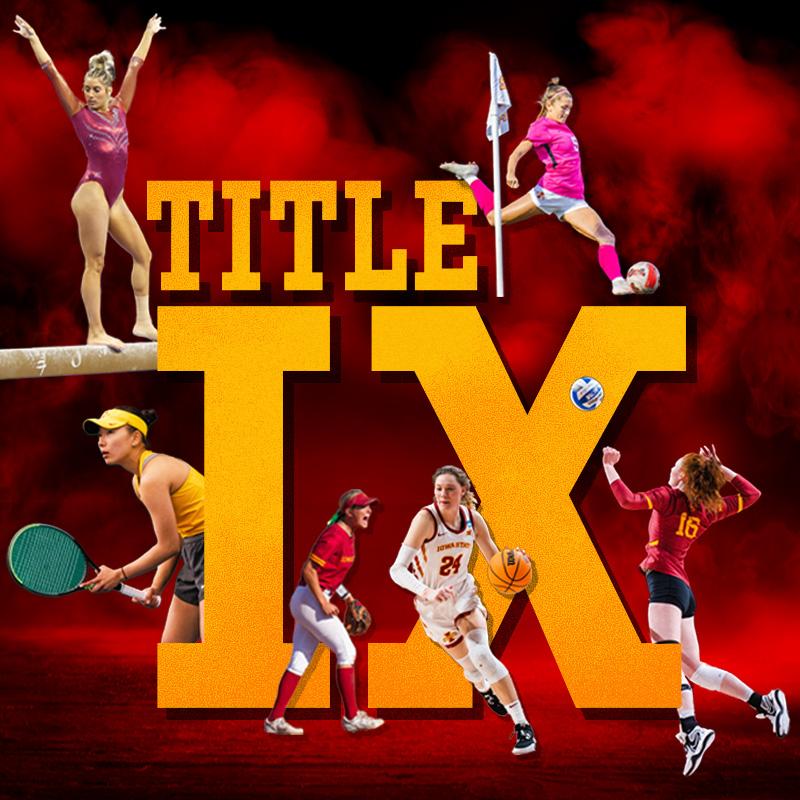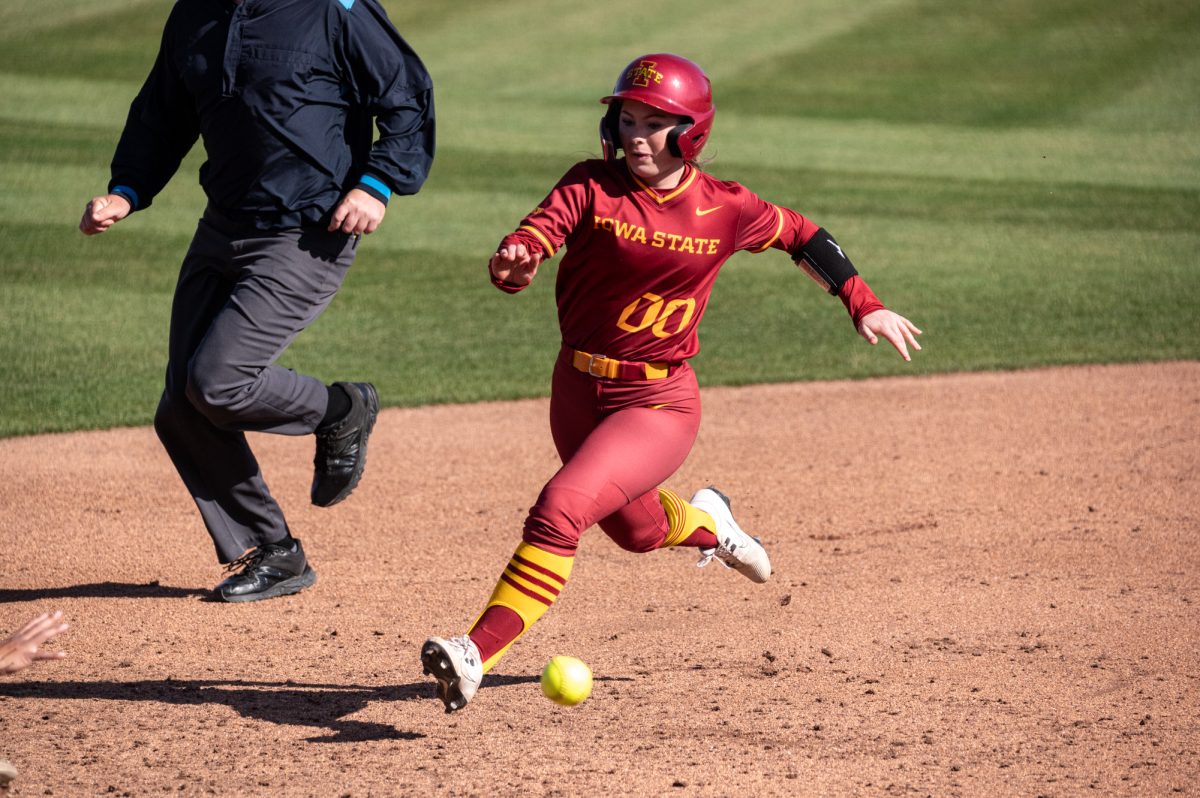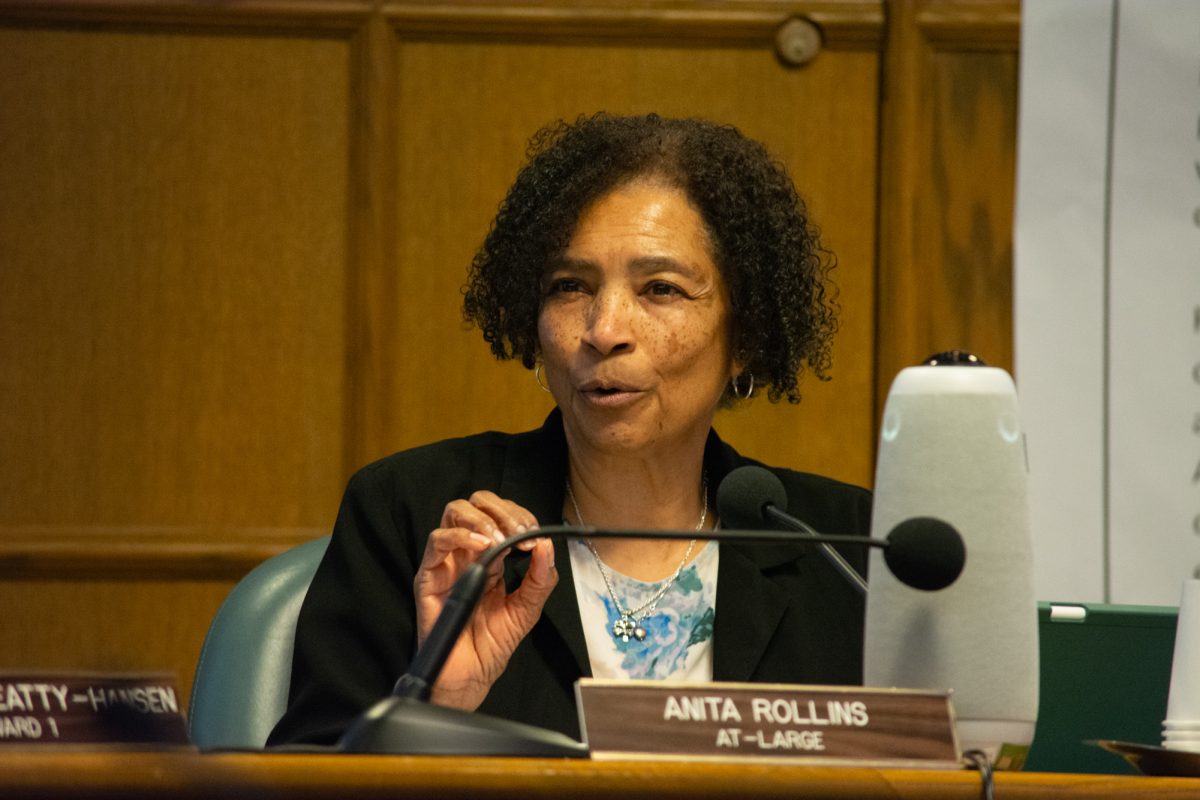‘Hate to see where we’d be today without it’: Celebrating 50 years of Title IX
June 21, 2022
Editor’s Note: This is part one of 11 stories covering women’s sports at Iowa State.
A historic Sweet 16 run by Iowa State women’s basketball, Thasaporn Naklo serving up the game-winning shot at the NCAA Championship, a packed crowd of CyHawk rivals in the softball stands and a perfect 10 from a Maddie Diab floor routine — all started as just a dream and became a reality because of 37 words.
“No person in the United States shall, on the basis of sex, be excluded from participation in, be denied the benefits of, or be subjected to discrimination under any education program or activity receiving Federal financial assistance,” according to Title IX of the Education Amendments of 1972.
Women’s sports look much different now than they did 50 years ago. For starters, women weren’t allowed the same funding and support in athletics as men. Women could attempt to compete for spots on the men’s teams, but they didn’t have their own teams.
Now, 50 years later, the anniversary of this momentous bill is approaching. The bill, originally brought to the forefront by former U.S. Rep. Patsy Mink (D-Hawaii) is still seeing effects to this day.
The atmosphere around women’s sports grew and evolved throughout the years.
As the anniversary approaches, it is time to celebrate Title IX’s impact on all student-athletes and look at the opportunities that were created.
A new field of opportunities
Before the early 1970s, women didn’t have the same opportunities as men when it came to education and athletics. Men had funding and access to sports, while most women weren’t able to get scholarships or compete in their own organized sports.
Something needed to be done; change needed to happen.
Around that time, the Civil Rights Act passed the torch of hope across the nation. Real change wasn’t something that could only be found in dreams; it was something that could be made a reality.
That’s when Mink, with help from former U.S. Rep. Edith Green (D-Ore.) and former U.S. Sen. Birch Bayh (D-Ind.), got to work on a bill that would change history, according to the Women’s Sports Foundation.
At that point, Mink commonly rewrote the history books. She was the first woman of color elected to the U.S. House of Representatives and the first Asian-American woman to serve in Congress, according to the National Women’s History Museum.
The idea that women deserved an equal playing field to men was a long time coming. Previously, women were allowed to try out for men’s teams, but there wasn’t much chance of getting funding for teams of their own.
The opportunities created under Title IX saw women receive the same benefits as men, such as facilities, and medical and educational resources. Athletic funding and scholarships helped women get the education they deserved and allowed them to compete in the activities they wanted.
“Title IX connects to everything we do,” Iowa State swimmer Martha Haas told the Daily. “The fact that we even have the opportunity to compete is because of Title IX.”
Iowa leads the way
Leading the forefront, the state of Iowa established equal playing fields well before Title IX was signed into law.
In the early 1920s, Iowa became one of the very few states that allowed girls to compete in high school basketball. At the time, mostly rural schools saw the need for an equal playing field, according to the Iowa Girls High School Athletic Union (IGHSAU).
Arguments began to take shape in Des Moines, Iowa, surrounding the idea of girls competing in the same sports as boys. The idea of change was not a welcome thought for many people at the time.
However, a small group of men decided that if the Iowa High School Athletic Association weren’t willing to provide opportunities to girls looking to compete in sports, they would create an organization of their own, according to the IGHSAU. That’s when the IGHSAU was born to provide funding for girls competing in high school sports.
During the time of arguments in the state of Iowa, one superintendent’s words spurred the change that started on that day.
“Gentlemen, if you attempt to do away with girls basketball in Iowa, you’ll be standing at the center of the track when the train runs over you,” John W. Agans, former Mystic, Iowa superintendent, said in his rebuttal.
Fast forward nearly 20 years, and E. Wayne Cooley took over with one goal in mind: increase the number of programs that would receive sponsorship from the IGHSAU.
For many years, the only women’s sport that received major funding and acceptance was basketball. Cooley’s idea was to expand that umbrella to fit other sports, such as track and field, cross country, softball, golf, swimming, tennis, volleyball and soccer, according to the IGHSAU.
All these sports, with the addition of gymnastics, make up the women’s sports seen today at Iowa State.
Many high school programs created under Cooley’s leadership flourished before Title IX was set in stone. Now, with Title IX, those sports are continuing to see growth at the high school and collegiate levels.
Iowa is still at the forefront of the evolution of women’s sports. Iowa State athletics have seen great growth and engagement in all its women’s sports.
“We were ahead of our time in our state,” Iowa State Senior Associate Athletics Director Nick Joos said. “I think that’s reflected in all four of the institutions that play division one sports in our state.”
Finding its footing
It is important to recognize where women’s sports started in Iowa and appreciate how far they have come.
Of course, just like any organization, women’s sports took some time to find footing.
When collegiate women’s sports were founded, they were adopted under a new organization, the Association for Intercollegiate Athletics for Women (AIAW). The main purpose of the new organization was to provide structure to women’s sports and administer national championships.
Having a national stage for women to compete caused major growth in every sport. When the AIAW hit its peak, nearly 1,000 schools were adopted under its umbrella.
One of the main goals the AIAW aimed for was to keep out the unethical practices that were seen in many men’s sports at the time. To prevent unfair advantages, scholarships were forbidden at the time.
It wasn’t until the early 1980s that the NCAA took the wheel and improved areas that the AIAW lacked. The resources the NCAA provided allowed women’s sports to grow to new heights.
Scholarships were increased and television viewership began to pick up. New opportunities presented themselves daily to women athletes across the nation.
“That’s what you want; you want them to come in and have a great experience, earn scholarships and graduate and have a great experience along the way, not only from an academic standpoint but athletically,” Joos said. “I think they are much more able to do that now.”
Over the years, the structure of women’s athletics improved. New facilities and more resources were provided to better the experience of not just the male student-athletes but female student-athletes as well.
As time passed, the idea of an equal playing field became more of a reality. Instead of women having to pack into small vans to drive themselves across the country to compete in front of small crowds, the funding was starting to allow them to acquire better resources across the board.
“We get to fly to far away meets instead of drive because of Title IX,” Iowa State swimmer Martha Haas said. “We have access to lots of different facilities such as the new weight room or the new sports performance center because of Title IX. We get lots of gear and have access to all the same medical resources as the male teams.”
A bright future for women’s sports
At Iowa State, it’s clear to see how much women’s sports grew over the years. Popularity is bigger now than ever and has seen record-breaking growth in the last five to 10 years.
Looking specifically at Iowa State athletics, record-breaking attendance is seen yearly. The Cyclones ranked 23rd in the nation in volleyball attendance in 2021 and second in women’s basketball attendance.
Women’s basketball now stands on similar levels to most men’s sports. As sports continue to see success, fans continue to respond.
The CyHawk series also saw a great turnout in every sport, not just football and basketball. There were record-breaking numbers in the stands for softball and gymnastics.
“It has been incredible to watch our sport grow in the last few years,” Iowa State gymnast Madelyn Langkamp said. “Without Title IX, we wouldn’t be watching the NCAA Gymnastics Championship air on ABC or see NCAA gymnasts sign thousand-dollar NIL deals.”
It’s clear to see that popularity will continue to rise, which in turn brings more opportunities for female student-athletes.
“I think you are going to continue to see more opportunities for young women,” Joos said. “And the fans are going to continue to respond.”
Along with the increase in attendance, women’s sports also saw increased coverage across broadcast networks. More networks are starting to branch off and offer coverage of events that might not have been covered before.
Also, as collegiate sports as a whole continue to gain media attention, more opportunities will present themselves. As television continues to grab viewers and the media continues to cover women’s sports, they will continue to grow.
“In my four years as a collegiate athlete, I have had the privilege of competing in many sold-out arenas, seeing many of Iowa State Gymnastics’ home meets air on ESPN and met many of my best friends along the way,” Langkamp said. “I owe my experience to Title IX and all the female athletes it has impacted.”
It is hard to predict the future, but when it comes to women’s athletics, it is easy to see that the future is bright. Challenges have been common along the way, but that hasn’t stopped female student-athletes from taking advantage of the opportunities that come their way.
Collegiate athletics looks a lot different now than it looked 50 years ago. Thanks to Title IX, women had a voice in college athletics and were able to fight for an equal playing field. Women’s athletics are no longer a small niche community; they are a flourishing cornerstone to athletics programs across the country.
Without Title IX, there is no telling where women’s sports would be today. One can only imagine how different the nation would be.
When talking about the impact of Title IX as a whole, Joos summed it up perfectly.
“I would hate to see where we would be today without it.”
Reporting contributed by Andrea Maldonado.







